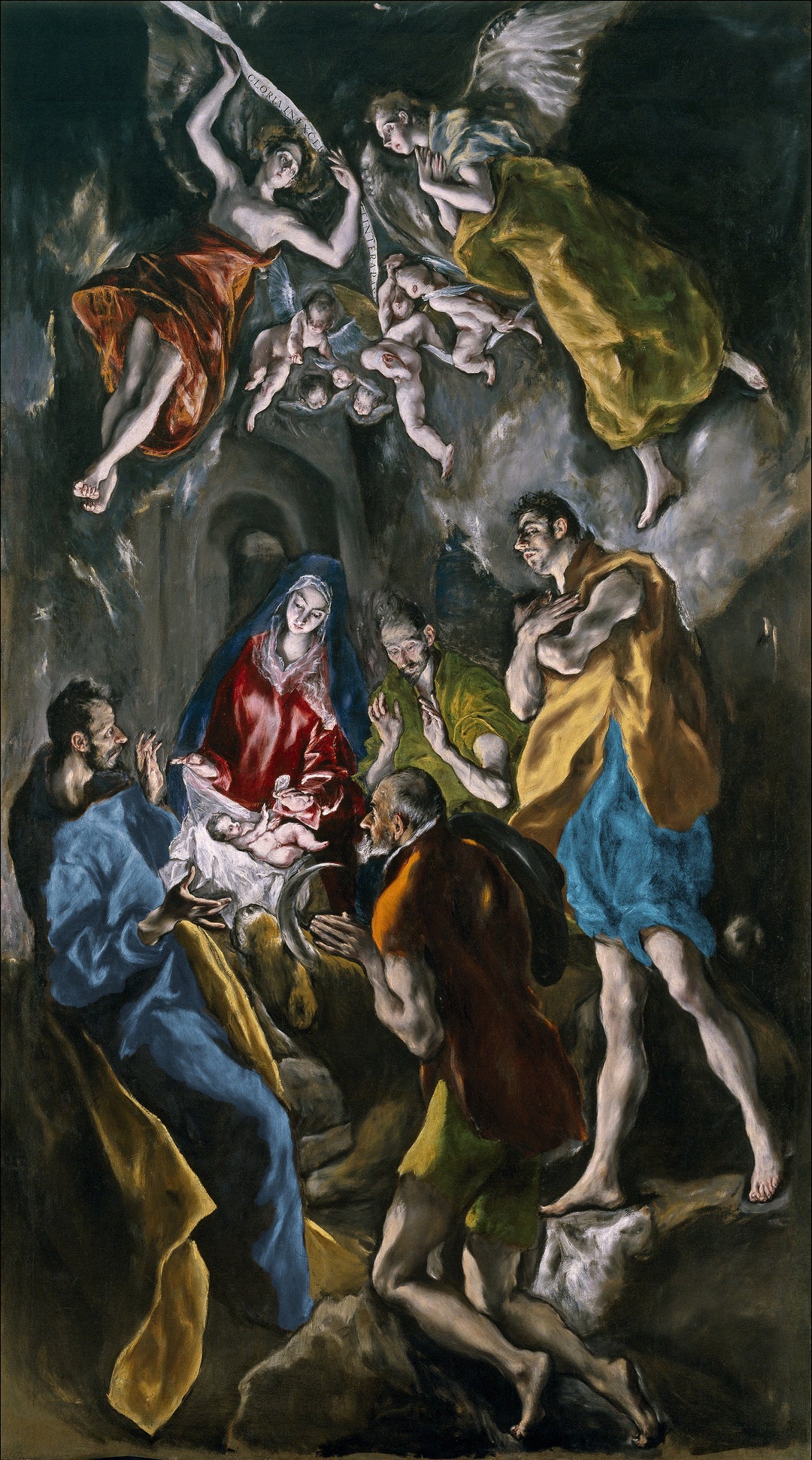
Adoration of the Shepherds - El Greco
| Author: | El Greco |
|---|---|
| Title: | Adoration of the Shepherds |
| Original location: | Museo del Prado, Madrid, Spain |
| Year: | 1612 |
The canvas Adoration of the Shepherds, painted by El Greco in 1612, represents an artistic and spiritual testament by the Cretan painter, who concluded his career with this work destined for the convent of Santo Domingo el Antiguo in Toledo. The scene unfolds in a narrow, vaulted space, with drama heightened by the light emanating from the Christ Child, making him the luminous and symbolic epicenter of the painting. The composition is organized into two levels: the lower, where the Virgin, Saint Joseph, and the shepherds express fervent adoration, and the upper, where angels form a celestial opening that connects the earthly realm with the divine.
The Mannerist style, of which El Greco is a late and highly individual exponent, is evident in the elongated figures, serpentine lines, and foreshortenings that energize the composition. These techniques, together with the use of an intense and contrasting color palette—such as the deep reds of the Virgin set against the ethereal greens and blues of the angels—reflect the influence of Tintoretto and Titian during his Venetian period. Likewise, the Byzantine symbolism inherited from his early training in Crete merges with the demands of the Counter-Reformation, where the unreal, spiritual light emphasizes the centrality of Christ as the source of salvation.
The emergence of modernity can be glimpsed in the loose, fluid brushstrokes, which anticipate aspects of abstract expressionism by making the pictorial matter a protagonist in its own right. The choice of a closed, seemingly suffocating space underscores the painter’s intention to focus attention on the act of adoration, minimizing spatial distractions. Influenced by the Spanish spirituality of the era, El Greco achieves a fusion between religious drama and emotional expressiveness that was key to inspiring nineteenth-century artists like Delacroix and, later, twentieth-century expressionists.
With this work, El Greco reaffirms his commitment to a transcendental vision of art, synthesizing here his artistic and personal journey. From his post-Byzantine roots to his adaptation to the Italian Renaissance and his consolidation in Counter-Reformation Spain, the painting stands as a bridge between past traditions and emerging modernity. In the Christ Child, the source of light and salvation, the cultural and religious influences of East and West converge, symbolizing the universality of his artistic message.